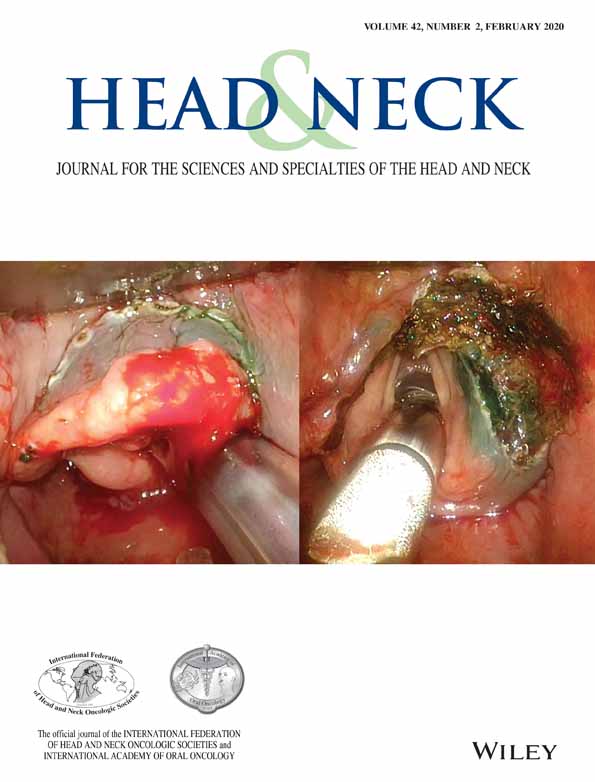Alterations in genetic pathways following radiotherapy for head and neck cancer
Abstract
Background
Radiotherapy (RT) is an integral component in the treatment of head and neck cancer (HNC).We hypothesized there would be alterations in gene-expression and pathway activity in HNC samples obtained in recurrent HNC that were previously treated with RT, when compared to RT-naïve disease.
Methods
Patient data was abstracted from a prospectively maintained database. Linear-microarray analysis and supervised gene-set enrichment-analysis were employed to compare RT-naive and recurrent disease after prior-RT.
Results
A total of 157 patients were analyzed, 96 (61%) were RT-naive and 61 (39%) had RT.After radiation, there was upregulation of genes associated with angiogenesis, protein-translation-machinery, cell-cycle regulation, and growth factors, and downregulation associated with Myc activity, and hypoxic response (all P < .001).Previously irradiated HNC was associated with downregulation in 19/42 genes in the Wnt/B-catenin-pathway (P = .045)and 119/199 genes involved in the MYC target pathway (P = .024).
Conclusion
Patients with recurrences salvaged surgically post-RT had significant alterations in gene-expression and in Wnt/B-catenin and MYC-target pathways. These pathways may represent potential targets to prevent development of resistance to RT.
CONFLICT OF INTEREST
The authors declare no potential conflicts of interests.




